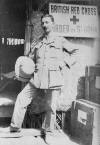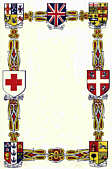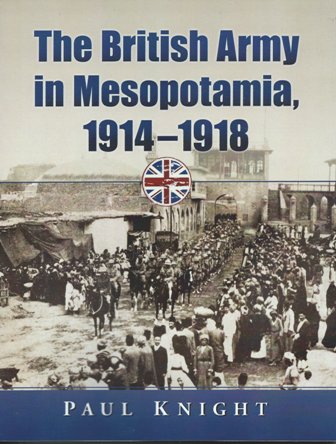The War in Mesopotamia (Iraq) 1914-18
| Mesopotamia
Campaign 1914-1919 Iraq |
 |
|
This
site is made up of 300 pictures
taken by Captain Charles (Chas) Henry Weaver during his service in The
Great War. This was the time of the creation of Iraq out of "Southern
Turkey".
Captain Weaver worked with
The Red
Cross, but was under military command. He was mentioned in dispatches
and was awarded the MBE for
his wartime service.
Main Site
Enter here
|
 |
The
pictures and artefacts were kept by Mr Weaver's
daughter
Joyce
Edna
Huntly (1926-2002) to whom this site is dedicated.
Mesopotamia was the first foreign affray for the (British) Indian
Military. By 1918 there were 304,000 Indian troops and 107,000 British
troops stationed in Mesopotamia. The British Indian Command was
different and the two armies did not always work well together. The
Indian side was poorly invested in modern equipment, and medical
facilities were pitiful. The war was called "MesPot" with good
reason. Some order was established by 1920, from which the modern
state of Iraq was established.
The pictures show a different Iraq. The Marshes and their
peoples
as photographed were lost. Many of the sites Captain Weaver
photographed here can still be recognised
when shown on television news to this day.
These pictures were taken on the British side, no
doubt in during the times when things were slack.
Captain
Weaver was a contemporary of Dr Maurice
Nicholl who was an RAMC doctor. Dr Nicholl gave a copy his book "In
Mesopotamia" to Captain Weaver. The book was written under the pen name
Martin Swayne. Dr Nicholl became a leading psychiatrist after the
war, and was one of the first New Age thinkers, developing "The Fourth
Way". Martin Swaine describes the heat in evocative detail, only hinted
at in these pictures. "Through the double canvas of the tent the sun
beats down like a giant with a leaden club" is just one line he uses.
In one period from 7th-28th July 1917 temperatures did not fall below
116 Deg F in the shade and 423 British and 59 Indian troops died of
heat stroke.
Captain
Weaver was also in Basra at the time of
Gertrude Bell, the Daughter of the Desert, She was the
map-maker,
linguist, soldier and spy, and a creator of Iraq.
Captain
Weaver was born in 1888 and died in 1956, not
long after the Suez Crisis which marked the end of British involvement
in the middle East. Britain's military interest in Mesopotamia, then
Iraq, ceased in 1958 until 2003....
For
details of the 1914-1919 campaign you can buy a
new book which has been
published by Pen and Sword "Battles on Tigris" by Ron Wilcox. See the
link
below. Gertrude Bell's astonishing work and details
of the
politics
after the war has been written up by Georgina Howell in her book
Daughter of The Desert, published in August 2006, see the links
below.
Once
again Iraq is topical. These pictures show
what life was like for the water people around the famous rivers of the
Tigris and Euphrates 1915-1919. This site's last update 16th December 2013
Contact
me, Dr Gerard Bulger here





